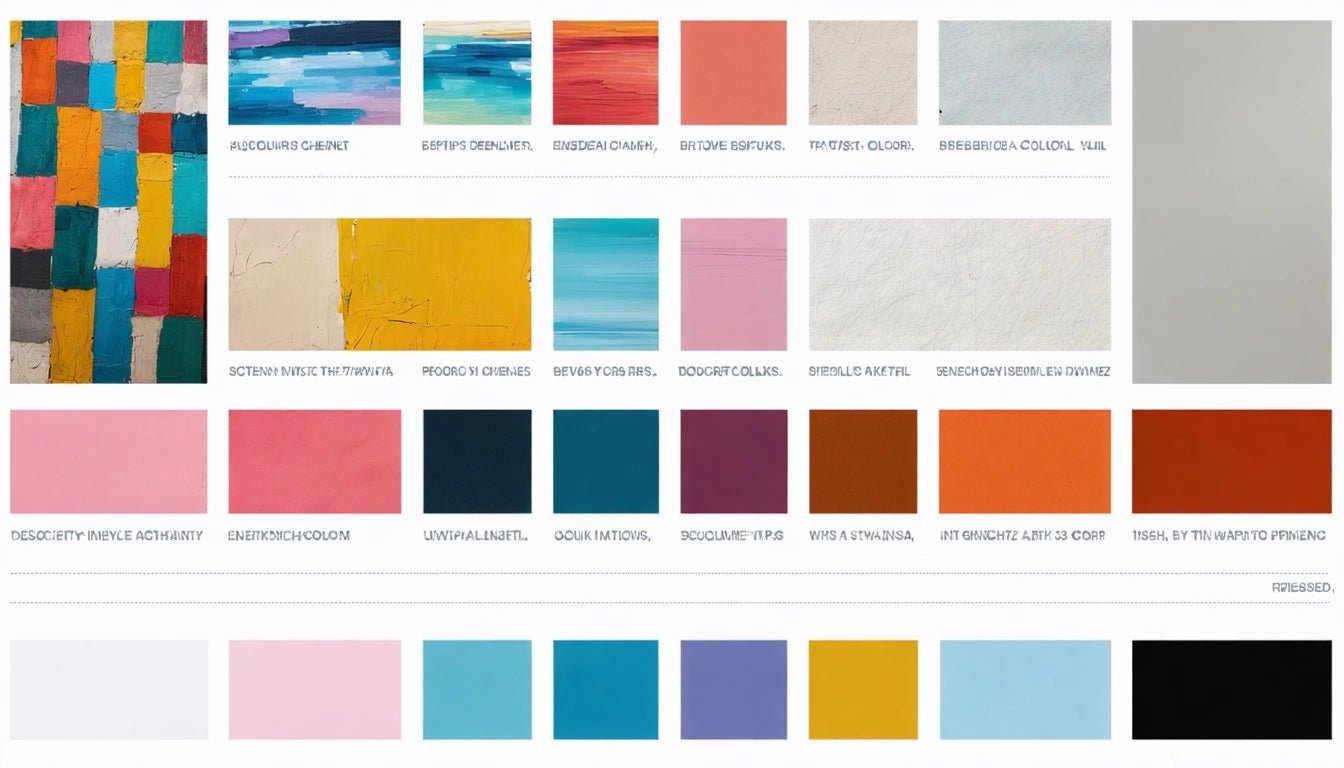Table of Contents
Understanding the Triadic Color Scheme: A Guide to Harmonious Design
The triadic color scheme represents one of the most vibrant and balanced approaches to color harmony in design. By utilizing three colors equally spaced around the color wheel, this scheme creates a rich visual experience while maintaining harmony. Whether you're designing packaging, websites, or marketing materials, understanding what the triadic color scheme is and how to apply it effectively can elevate your visual communication.
Understanding the Triadic Color Scheme
A triadic color scheme consists of three colors that are evenly spaced around the color wheel, forming an equilateral triangle. This arrangement creates a balanced and vibrant color palette that offers strong visual contrast while maintaining harmony. The mathematical precision of this spacing is what gives triadic color schemes their distinctive visual appeal and balance.
The fundamental principle behind triadic color schemes is rooted in color theory, which suggests that colors with specific relationships create pleasing visual experiences. As explored in this comprehensive guide on triads, the concept extends beyond color into various aspects of design and symbolism.
Principles of Triadic Color Harmony
Color Wheel Positioning
The most common triadic color scheme includes the three primary colors: red, yellow, and blue. However, any three colors equidistant from each other on the color wheel can form a triadic scheme. For example, the secondary colors orange, green, and purple also create a triadic relationship.
Balance and Contrast
What makes the triadic color scheme particularly effective is its inherent balance. The equal spacing creates natural harmony while providing enough contrast to make each color stand out. This balance is essential for creating designs that are both cohesive and visually interesting.
According to research on color symbolism and meaning, each color in a triadic scheme brings its own psychological associations, which can be strategically leveraged in design projects.
Applying Triadic Colors in Different Contexts
Graphic Design and Branding
In branding, triadic color schemes can create memorable and distinctive visual identities. Many brands use modified triadic schemes, often with variations in saturation and brightness to create more sophisticated palettes while maintaining the underlying triadic relationship.
Product Packaging
Packaging designers often employ triadic color schemes to create eye-catching products that stand out on shelves. For example, our colorful party-sized pre-rolled cones collection uses triadic color principles to create visually appealing packaging that attracts customer attention while conveying the product's festive nature.
Web and UI Design
In digital interfaces, triadic schemes can guide users' attention and create visual hierarchy. Typically, one color serves as the dominant hue, while the other two act as accents for buttons, links, or highlighted information.
Successful Triadic Color Scheme Examples
- Red, Yellow, Blue: The classic primary color triad, often used in children's products and educational materials
- Orange, Green, Purple: The secondary color triad, popular in creative and artistic applications
- Blue-Green, Red-Orange, Yellow-Purple: A sophisticated triad using tertiary colors, common in fashion and interior design
These combinations demonstrate the versatility of triadic schemes across different industries and applications. As noted in this exploration of popular color schemes, triadic arrangements consistently rank among designers' favorite palettes for creating visual impact.
Tips for Implementing Triadic Color Schemes
Use the 60-30-10 Rule
To prevent overwhelming designs, apply the 60-30-10 rule: use one color for 60% of the design (usually the most neutral of the three), another for 30% (secondary elements), and the third for 10% (accents and highlights).
Adjust Saturation and Value
Pure triadic colors at full saturation can be jarring. Consider adjusting the saturation and brightness of your chosen colors to create more sophisticated and harmonious combinations while maintaining the triadic relationship.
Consider Emotional Impact
Each color in your triadic scheme carries psychological associations. Understanding how colors affect mood and emotions allows you to select triadic combinations that support your communication goals.
The Future of Triadic Design in Visual Communication
As design trends evolve, we're seeing more nuanced applications of the triadic color scheme. Designers are increasingly combining color theory principles with accessibility considerations, creating triadic palettes that are both visually striking and inclusive. The integration of triadic color principles with complementary color techniques is creating hybrid approaches that offer the best of multiple color harmony systems.
In the digital realm, dynamic triadic color schemes that shift based on user preferences or time of day represent an exciting frontier. These adaptive color systems maintain the mathematical relationship of triadic harmony while offering personalized visual experiences.
Understanding what the triadic color scheme is provides designers with a powerful tool for creating balanced, vibrant designs across all mediums. By mastering this fundamental color relationship and applying it thoughtfully, you can create visual communications that are both aesthetically pleasing and effectively support your message.



















